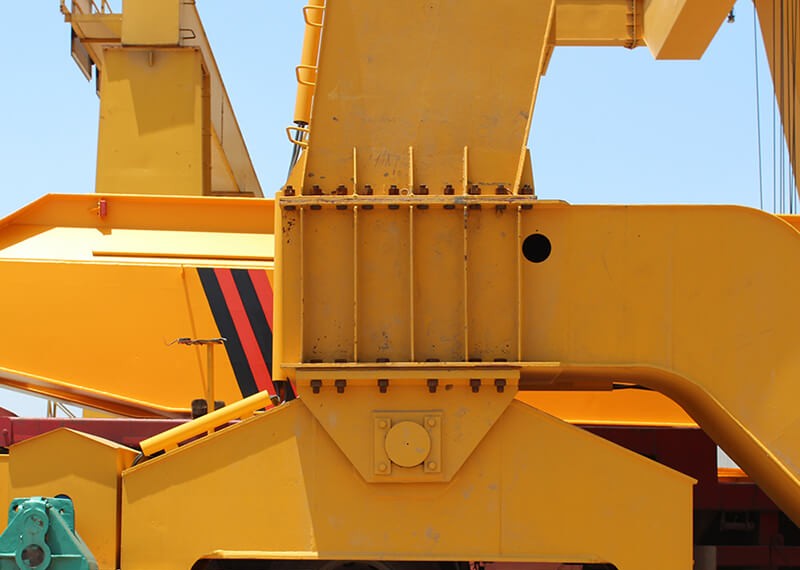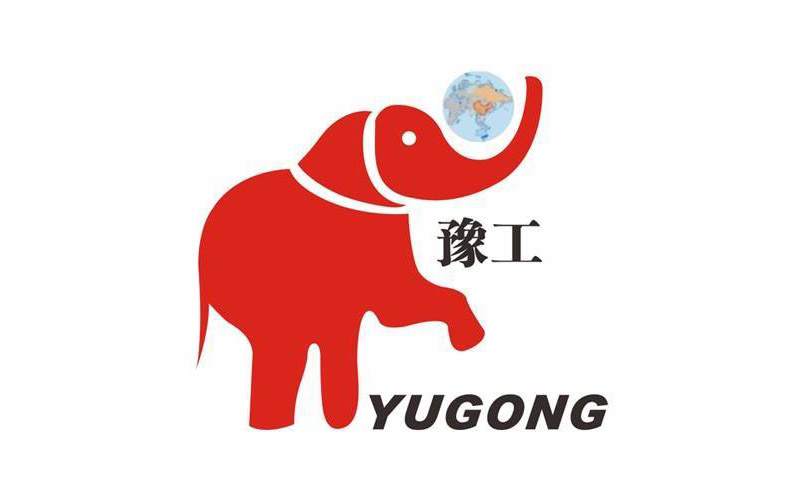
Detailed explanation of the standard question and answer for the scrapping of various parts of the c
Crane refers to a multi-action hoisting machinery that vertically lifts and horizontally transports heavy objects within a certain range. Also known as crane. Belongs to material handling machinery. The working characteristic of the crane is to do intermittent movement, that is, the corresponding mechanism of reclaiming, transporting, unloading and other actions in a working cycle is alternately working. The development and use of cranes in the market are becoming more and more extensive. For such a machine that handles heavy objects, such a compound movement will naturally cause a lot of damage to its parts. Therefore, we must understand the scrap standards of each part in detail and replace the parts in time to make the crane safer. Efficient work.
What is the scrap standard for hooks?
Answer: When there are the following defects, they should be scrapped and replaced:
(1) Those with cracks, cracks or cracks on the surface shall be scrapped;
(2) The wear of the dangerous section exceeds 10% of the original size and should be scrapped;
(3) The dangerous section and the neck of the hook have plastic deformation and should be scrapped;
(4) The opening degree is increased by 15% compared to the original size and should be scrapped;
(5) The torsional deformation of the tip of the hook exceeds 10. The above should be scrapped;
What is the scrap standard for pulleys?
Answer: The scrap standard for pulleys is
1) The wall thickness of the pulley rope groove wears up to 20% of the original thickness;
2) The radial wear at the bottom of the pulley rope groove exceeds 50% of the wire rope diameter or the uneven wear exceeds 3mm;
3) Serious cracks were found in cast iron pulleys;
4) Severe damage to the rim of the pulley
What is the scrap standard for brake wheels?
Answer: When the depth of claw marks or radial wear on the working surface of the brake wheel reaches 1.5mm, it should be re-machined and heat-treated. When the wear of the brake wheel of the lifting mechanism exceeds 40% of the original thickness, it shall be scrapped; when the wear of the brake wheel of the operating mechanism exceeds 60% of the original thickness, it shall be scrapped.
What is included in the overhaul of the bridge crane?
Answer: The overhaul includes: the mechanical part: all mechanisms are disassembled, including the reducer, coupling, drum set, wheel set and picking device, etc., replacement parts that should be scrapped, reassembled after cleaning, and lubricated. Replace the wire rope and brake.
Electrical part: the motor should be disassembled, dried, assembled and lubricated. Replace the damaged motor, replace the brake opening device, replace the damaged controller, repair or replace the protection cabinet, replace the wiring of all lines, re-wiring and install, and replace the control board of the lighting signal system.
metal structure part: correct and strengthen the main girder with downward deflection and side deflection. Clean the whole crane and repaint it with anti-rust paint twice.
What is the scrap standard for wheels?
Answer: The wheel should be scrapped when one of the following conditions occurs: (1) There is a crack. (2) The thickness of the wheel flange wears up to 50% of the original thickness. (3) The tread thickness wears up to 15% of the original thickness. (4) When the running speed is lower than 50m/min, the line profile can reach 1mm; or when the running speed is higher than 50m/min, the line profile can reach 0.5mm. (5) There are pitting on the tread. When the wheel diameter is less than 500mm, the pitting diameter is greater than 1mm; or the wheel diameter is greater than 500mm, the pitting diameter is greater than 1.5mm, and the depth is greater than 3mm, and the number is more than 5.
When the hook is placed in the lowest position, how many loops of wire rope should be kept on each side of the drum? Why?
Answer: 1) When the hook is placed at the lowest position, the wire ropes on both sides of the drum should be kept at least two turns.
2) Because the wire rope is fixed on the drum by the pressure plate, only when more than two turns are retained, can the wire rope and the drum generate a large friction force, reduce the tension of the pressure plate, and prevent the wire rope from falling off the pressure plate when the load is suspended. An accident occurs when the pressure plate screw is pulled out or broken.
What are the reasons for the rapid wear of gear coupling gears and the measures to improve their service life?
Answer: Answer The reasons for rapid wear of gear coupling gears are as follows:
1) The installation accuracy is poor, the deviation of the two shafts is large, the internal and external teeth are not meshed correctly, and the local contact stress is large.
2) The lubrication is not good. Because it is a connection form without relative movement, the grease cannot be automatically replenished after being squeezed out, so it may be in a state of dry friction to transmit torque, thus accelerating the wear and damage of the tooth surface.
3) Working in a high-temperature environment, the lubricating oil is dried, which deteriorates the lubrication state, and accelerates the wear and damage of the tooth surface.
4) Violation of operating regulations, frequent reverse braking, accelerated the damage of gear teeth.
The key measures to improve the service life of gear couplings are:
Improve the installation accuracy of each component, strengthen daily inspection and regular lubrication, and at the same time comply with the improvement of operating procedures and operating technology.
Scrap standards for forged hooks for cranes.
Answer: For forged hooks, the scrapping standards are: (1) There are cracks or breaks on the hook surface. If cracks are found on the surface of the hook, they should be replaced immediately, and repair welding is not allowed. (2) When the height wear of the working section of the hook (at the lanyard) reaches 10% of the original height, it should be scrapped. (3) When the hook mouth, hook neck and dangerous section of the hook are permanently deformed, they shall be scrapped; the hook mouth shall be scrapped if the opening degree exceeds 15% of the original size. (4) The hook tail and thread transition section should be scrapped when there are knife marks or cracks.
What are the reasons that cause the motor to vibrate?
The internal reasons that cause the motor to vibrate are:
(1) The rotor mass is eccentric;
(2) The stator core is not firmly installed in the casing;
(3) The shaft head of the motor is bent or the brake wheel mounted on the motor shaft is eccentric;
(4) The motor foot screws are loose;
(5) Poor contact of the rotor circuit, or short-circuit between turns of the stator winding, resulting in unbalanced electromagnetic torque;
(6) The bearing is worn and the clearance exceeds the allowable range.
The external reasons are:
(1) The motor and the driven reducer are not concentric;
(2) The reducer vibrates and is transmitted to the motor connected to it;
(3) The rigidity of the steel structure of the motor base is insufficient.
What is the scrap standard for brake wheels?
Answer: (1) There are cracks;
(2) The unevenness of the wheel surface reaches 1mm or the depth of wheel friction damage reaches 2mm;
(3) The brake wheel flange of the lifting mechanism wears up to 40% of the original thickness
(4) The brake wheel of the operating mechanism wears up to 50% of the original thickness.
To what extent should the reducer gear be scrapped?
Answer: (1) Tooth fracture and crack; (2) When the gear on the first shaft of the hoisting mechanism reducer wears up to 5% of the original thickness, when the gears on the remaining shafts wear up to 20% of the original tooth thickness, the operating mechanism When the gear on the first shaft in the reducer reaches 10%, when the gears on the other shafts reach 30-40%; (3) The pitting area of the tooth surface should not exceed 60% of the tooth height and width.
What are the hazards caused by rail gnawing?
Answer: (1) Reduce the service life of the wheel track; (2) Increase the running resistance and increase the energy consumption. In severe cases, the car will not be driven; (3) Due to the gnawing of the rail, the entire vehicle will vibrate greatly, causing the fasteners to loosen At the same time, it also affects the service life of the plant structure; (4) When the rail is severely gnawed, it may climb on the top of the rail and cause a derailment accident.
The role of lubricating oil?
Answer: Lubricating oil is a liquid lubricant used on various types of machinery to reduce friction and protect machinery and processed parts. It mainly plays a role of lubrication, cooling, rust prevention, cleaning, sealing and buffering.
What happens to the reel should be scrapped?
Answer: The reel is to wind the wire rope, transmit power, and convert the rotary motion into linear motion. The reel is usually cylindrical, and there are two types of single-layer winding and multi-layer winding. Gray cast iron is generally used, and large reels can be welded by steel plates. When the reel ① is cracked or damaged at the edge; ② the abrasion of the wall of the reel reaches 20% of the original wall thickness, it should be scrapped.
If the reel is cracked, it is not allowed to be welded and should be replaced; it should be replaced when the amount of wear reaches 20% of the wall thickness of the reel; the diameter of sand holes and pores shall not exceed 8 mm, the depth shall not exceed 25% of the wall thickness, and it shall not exceed 1 per 100 mm , Blast holes should be welded and polished.
Scrap of the wire rope drum When one of the following situations occurs, the drum should be scrapped:
① Cracks.
②The wear of the drum wall exceeds 20% of the original wall thickness.


